| A | B |
|---|
| The tendency of air and water to follow a curved path because of the rotation of the Earth is called _____. | the Coriolis Effect, 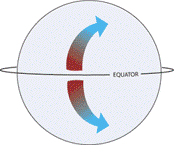 |
| Global _______ and ___________ patterns are caused in part by the Coriolis Effect. | wind, ocean current |
The rotating belts of air, such as the Hadley, Ferrel, and Polar Cells pictured below are called _________ cells because the movement of air is caused by _________., 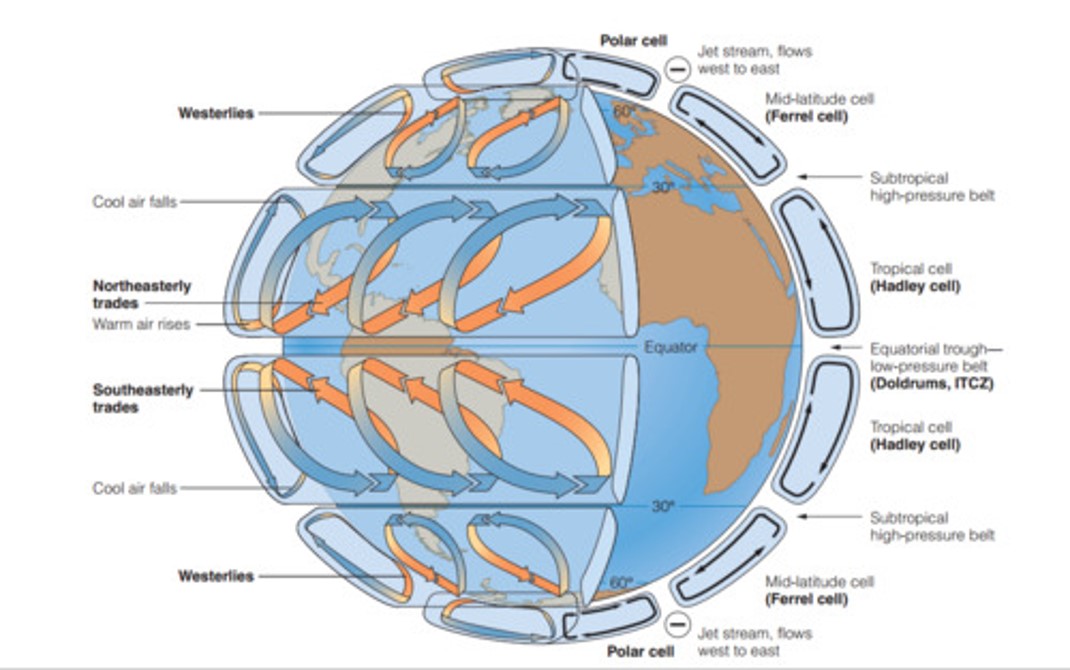 | convection (The convection starts at the equator where warm air rises drawing in air from further away from the equator to replace it. This starts a loop of air movement that descends at 30 degrees latitude but also gets two more cells moving, the Ferrel and Polar cells),  |
| Air that rises at the equator due to convection moves away from the equator and descends back toward the ground around ____ degrees latitude. | 30,  |
The air in the Hadley Cell shown below rises near the equator, usually causing thunderstorms that release moisture from the air, drying it out. Then it moves to around 30 degrees latitude and descends. This causes the air to _______ as it comes under increasing pressure, making it ______ that rain will fall at 30 degrees latitude. This is where most of the World's _____ biomes are found.,  | warm up, unlikely, desert,  |
Each convection cell correlates to an area of Earth’s surface called a(n) ______________ that is characterized by surface winds that flow in one main direction., 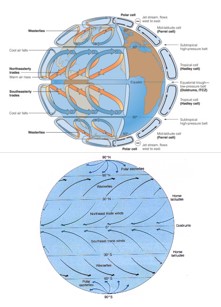 | wind belt,  |
| Name the 3 wind belts in order starting with the one closest to equator. | trade winds, westerlies, polar easterlies,  |
| Which direction do the prevailing winds blow over most of the United States? | East (The trade winds that blow over the U.S. are called the Westerlies because they are coming from the west, meaning that they are blowing toward the East), 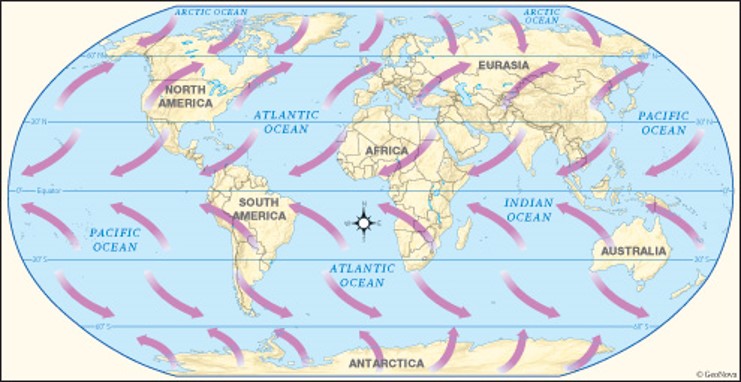 |
| The trade winds blow from ____ to _____ and are generally found between ________ degrees north or south latitude. | east to west, 0 and 30,  |
| The Westerlies blow from ____ to ____ and are generally found between ________ degrees north or south latitude. | west to east, 30 and 60,  |
| The polar easterlies blow from ____ to ____ and are generally found between ________ degrees north or south latitude. | east to west, 60 and 90,  |
| Air tends to _______ at the equator. | rise,  |
| Sinking air at 30 degrees latitude and over the poles creates ______ pressure. | high,  |
| Rising air at the equator and 60 degrees latitude creates ______ pressure. | low,  |
| Sinking air at 30 degrees latitude and at the poles creates _____ pressure. | high,  |
| As air sinks near 30 degrees latitude, it's temperature ______ making it _____ likely that water vapor in the air will condense and precipitate. | increases, less (That's why most of the World's deserts are near 30 degrees north and south latitude),  |
| Where are most of the world's deserts found? | Around 30 degrees north or south latitude (This is because sinking air from the Hadley Cell warms up as it comes under more pressure making it almost impossible for precipitation to form. The air had already lost moisture where it rose near the equator, producing rain as the air cooled off and condensed. Then that drier air circulated to 30 degrees latitude, sank and warmed. Warm air can hold more moisture than cold air, so there isn't much chance of reaching 100% humidity and condensing into rain),  |
| Where are most of the world's tropical rainforests found? | Near the equator (Warm moist air rises at the equator, cools off as it hits the colder temperatures in the troposphere. Cold air can't hold as much water vapor as warm air, so the water vapor condense causing it to rain often around zero degrees latitude),  |
| TRUE or FALSE: It is really windy at the equator where air rises and at 30 degrees latitude where air sinks. | FALSE: These areas are known for their light inconsistent winds. The area around the equator is known as the "Doldrums" and the area at 30 degrees is known as the "Horse Latitudes." These areas were feared by sailors due to their lack of good sailing wind.),  |
| Narrow bands of high speed winds that blow in the upper troposphere and lower stratosphere are called _____. | jet streams, 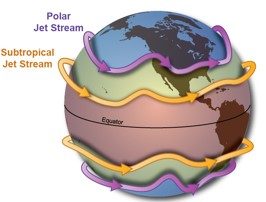 |
| TRUE or FALSE: Jet streams can change the path they are on. | TRUE (Even though the Polar Jet Stream averages being at 60 degrees latitude and the sub-tropical jet stream averages being at 30 degrees latitude, the streams flow and twist and this can affect weather patterns),  |
| Land breezes cause wind near the shore to flow toward ____ and they occur during the _____. | the sea, at night, 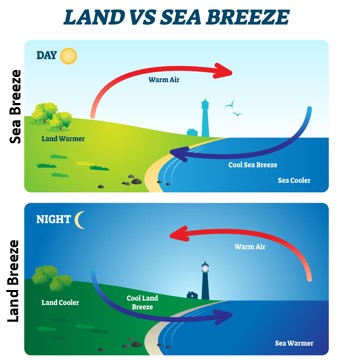 |
| Ocean breezes cause wind near the shore to flow toward ____ and they occur during the _____. | land, daytime,  |
| When do mountain breezes occur? | In the evening, 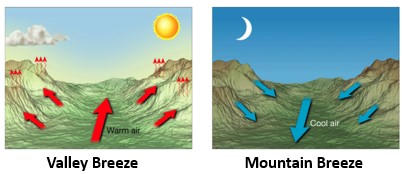 |
| When do valley breezes occur? | During the day,  |